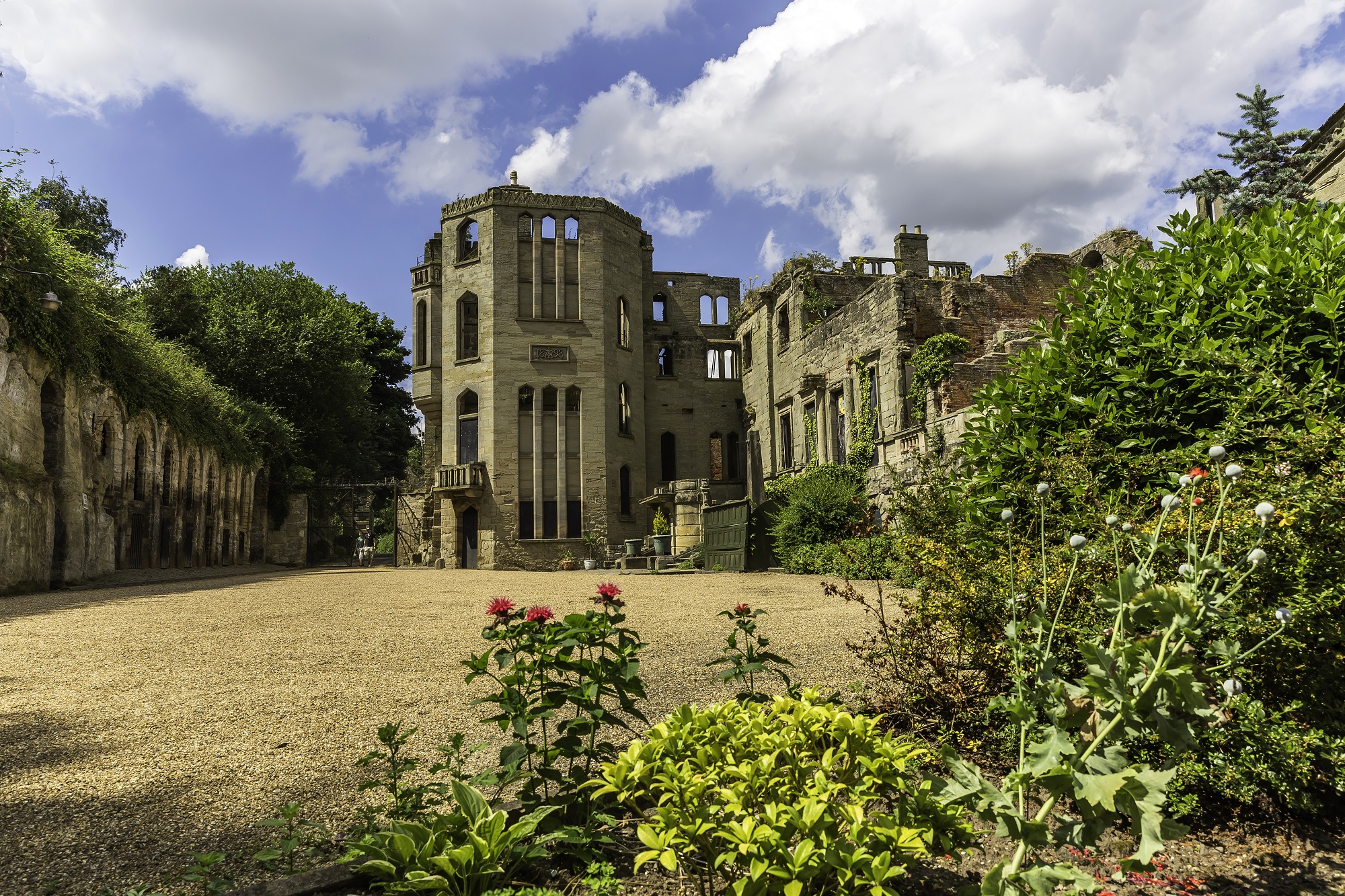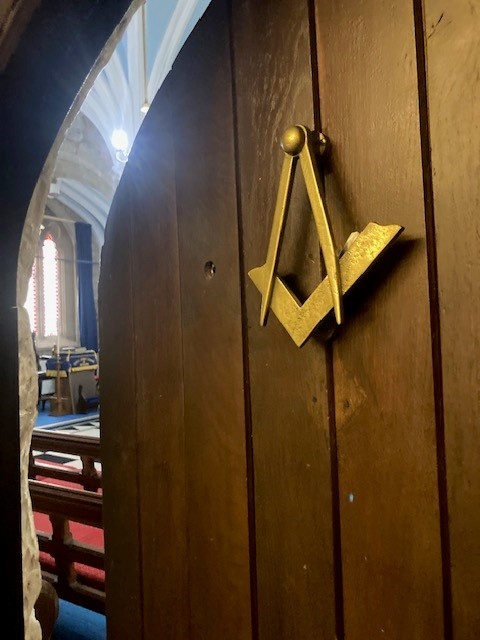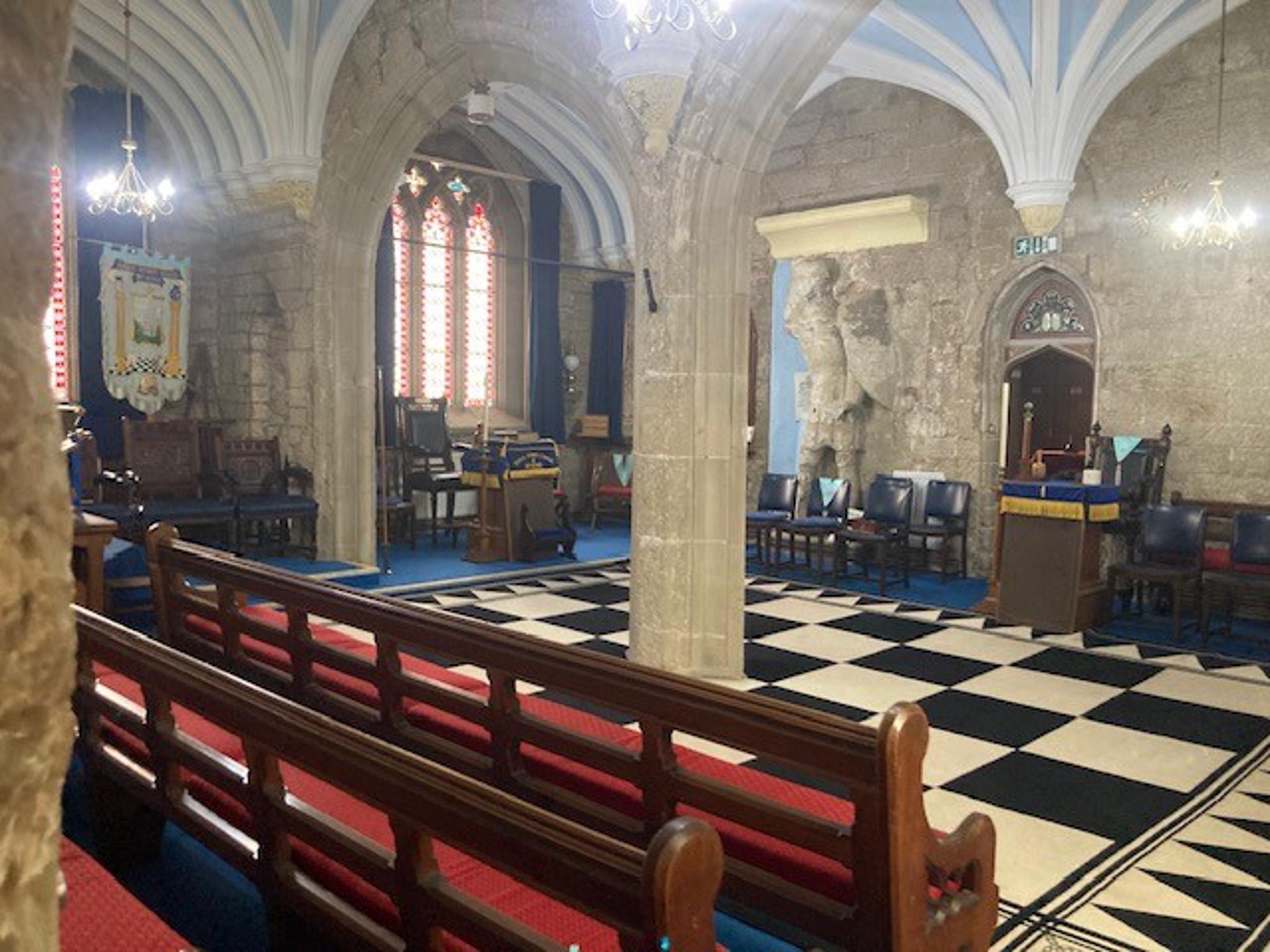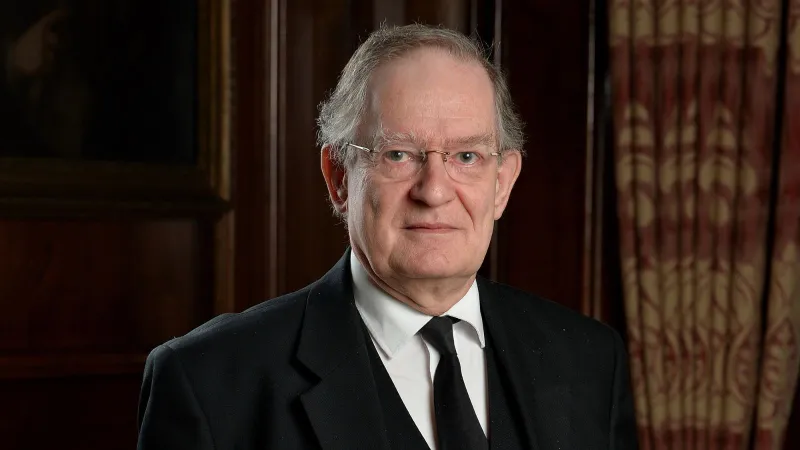
Once known as Gibbcliff, Guys Cliffe skirts a subsidiary of the River Avon in Warwickshire on an outcrop of sandstone. It is a similar rise to that which Warwick Castle is situated upon a little further down river, but here there are older bones!
History records that in 448AD, an oratory, which was likely a small chapel, was founded here by a St.Dubricius (Dyfrig or Deverok). At that time, he was the Bishop of Warwick. St.Dubricius was a curious figure, noted from a young age as a healer who went on to be the person who purportedly crowned the legendary King Arthur. Indeed, some scholars even attribute him to be the Merlin. Under a Papal edict, he would convert sites of Pagan significance or gatherings to the Christian faith. Guys Cliffe, with its ancient and mystical aspects, no doubt met such criteria and was an enchanting place to cite a chapel.
Thus, with what would be his principal oratory dedicated to St. Mary Magdelene, its association with legend began. This aspect would be reinforced in the ninth century by the legendary Guy of Warwick and his beloved Felice. Guy, according to the tale, retired to this place after his many renowned deeds and tribulations, ultimately passing away in his long-estranged wife's arms. Not long after, Felice, shaken by their bittersweet reunion, took her life by leaping from the high cliff, and it is said that the lamenting shade who walks the grounds is her sorrow-filled self.Guys Cliffe was a place of seclusion as a hermitage and nestled in a most enchanting bosom of nature proclaimed as supreme in the land as a delight for the senses. And so it sat, until change came.
By 1420, the ruinous first chapel and chambers had been extensively reworked into a licensed place of worship thanks to an earlier visit to Guys Cliffe by a youthful King Henry the Fifth, who was accompanied by Richard De Beauchamp, Earl of Warwick.
Resident chantry priests were then assigned to the building, dwelling in not only the principal room atop of the new build, which is the present secondary Masonic Temple, but also within a small cottage which stood on the site of today's house.
In the years that followed, the caverns and excavations around the site continued to be inhabited by hermetic devotees, and it remained a place of noted pilgrimage thanks to St.Dubricius and Guy of Warwick.
The sixteenth century, however, witnessed great change as the chapel and hermitage were swept up in the turmoil of the Reformation and the Dissolution of the Monasteries Act under King Henry VIII. Yet many such places saw devout Catholics discreetly continuing to practice. It's possible that the purported tunnels here were used at this time to afford a means of escape from the King's inspectors. They may even be so secreted that they remain undiscovered.
In 1547 a Sir Andrew Flammock KT (Knights Thistle) as a courtier of King Henry VIII and former Constable of Kenilworth acquired the estate and erected a house. This house stood alongside the defunct chapel and would come to stand near to a still house. The ancient springs here proved advantageous for the noted ales that began to be produced.
The estate then passed through a number of owners with only minor changes occurring until the mid-1700's. Then the old residence and the still house were all but completely removed, for at this time a Samuel Greatheed purchased the estate in 1750 in order to build a grand palladian house. This residence was set to be the seat of his family, whose fortunes had been accumulated through their ownership of plantations on the Caribbean islands of St.Kitts and Nevis.
The manor-like Greatheed House incorporated adapted remains of the previous residence for its basement level and indeed that former abode probably utilised parts of the early priest's cottage. Therefore, the remains today are an historical layer-cake of a building.
Around this time, the chapel, still defunct for religious purposes, appears to have been used as both a workshop and even as a cattle shelter, with obvious results!
The numerous old hermits' cells remained, many of which apparently exhibited deep-cut crosses. However, these characteristics were likely lost amidst the Greatheed works, or a number were possibly sealed away?
Samuel and Lady Mary's son, the locally renowned Bertie Greatheed, went on to alter and add considerably to his parents' house. The property came to dominate the cliff edge in such a situation that it seemed a work of romantic fantasy, which is very likely what the artistically inclined Bertie intended. Today, in a sadly ruinous condition, these works give over an archetypal look of an imposing and lost haunted house.
The property then passed into the Percy family of Northumberland. Lord Charles Bertie Percy married Lady Ann Caroline Greatheed, the granddaughter of Bertie Greatheed and primarily through Lady Caroline, as she preferred to be known, many other works were carried out.
Ultimately, it would be The Hon. Malcolm Algernon Percy, as the last 'Lord of the Manor' who completed the final addition to the house with his grand four-storey extension of 1898. This not only enlarged the property but also afforded it a welcome convenience as it housed two hand-drawn lifts, one as a passenger elevator for his infirm mother and the other as a service lift.
Perhaps it was this extension that the family occupied during the Great War when most of the house was given over to be used as a voluntary aid detachment hospital for injured soldiers. Over six hundred casualties passed through the gates to recover. Unfortunately, some did not, and it is said that the subterranean wine cellar's preservation aspect was used as a morgue.
Lord Algernon passed away in 1933 at Guys Cliffe and his daughter Lady Katherine Percy and her husband Capt. Heber Percy inherited. However, such were the death duties of the age, the scale and upkeep of the old house, that they humbly dwelt elsewhere, contemplating having to sell the family home.
The house sat mothballed until the arrival of the Second World War when it was leased out as a boy's home to The Waifs and Strays Society. It was managed by Paul Field, who became a pioneer in his practices. When peace came, he tried to persuade the society to keep using Guys Cliffe House. However, with much modernisation needed, it was deemed impractical. So, it returned to the family's hands who inevitably put it up for sale in 1946.
It then passed onto two sets of potential developers, the first of which was a consortium of businessmen who had plans for the house to become a historic tourist hotel. However, despite permission being granted and their foresight correct, the opportunity to save Guys Cliffe House in a tumultuous time was missed.
The next owner, a Mr J.F. Ward who'd been a part of that consortium was a builder from Coventry, who sadly only saw the estate as a money-making plot. He was granted permission to begin the demolition of the house in favour of some brand-new homes to be built in the modern style. A groundswell of objections ensued as the demolition work was underway, resulting in a late reprieve to stop this. But much of the roof had been lost, and the upper rooms had suffered serious slighting.
His plan dashed; Mr. Ward then resorted to splitting the estate up by selling off property lots around the grand house itself. This is how the old mill became the Saxon Mill public house.
The walled produce garden became Hinton's Nursery. The stables firstly a stud and then The Warwick School of Riding and how the local Percy housing estate came to be.
Mr Ward then legitimately vandalised the house by arranging what was commonly known as a stripping auction in 1952. When all this was done, he sold on what remained of this once great house, and one man, its saviour, came forward.
His name was Aldwyn Porter, and with his arrival, what had been a dramatic decline abated. Mr Porter looked to live in the property, but it had unfortunately become too ruinous to do so. He remedied what damage he could and instead built for himself a new home, which he called Guys Cliffe House. This was designed in the shape of an aircraft, as he came from that industry. He built this on the well meadow nearby so that he could always look onto that which he so admired - but could never inhabit or indeed ever bring back.
In his later years, Mr Porter became a Freemason, and he came to hear that a group of lodges at Allesley Hotel, Coventry, had lost their meeting place. Having a light-bulb moment, he put forward a proposal to those lodges. If they came to Guys Cliffe and made good the defunct chapel and other parts of the buildings, both parties would benefit. This took place, and as the old chapel door swung back to present drapes of webs and a considerable level of work ahead, life returned to Guys Cliffe.
It was St. George's Lodge who held the initial meeting, whilst many of their own and other lodge members plowed on with works to bring the buildings up to spec. All involved also ensured that they met with Mr. Porter annually at a special ceremony. Here they would hand over their rental payment, which amounted to just two bottles of beer under a peppercorn agreement.
Members out of the Craft lodges established a regular working party for improvement and maintenance, supported by their wives as a Friends of Guys Cliffe committee. Eventually, the lodges became the owners under a shareholder-ship formed following Mr Porter's passing in 1981. Despite alterations undertaken to the chapel and other rooms, the need to negotiate a central pillar in the chapel at meetings remains a feature of this place.

Probably the location that can boast the most ancient building to house Freemasonry Temples in use today in the world?
In 1992 it looked like the owners might have been able to address the sorry condition of the ruined house. Granada Studios approached the owners with a request to use this to film an episode of Sherlock Holmes called 'The Last Vampyre'. The stage was set for this, but a particularly large scene called for the house to appear to be ablaze, and this would be simulated by the use of pyrotechnical effects. Unfortunately, those effects turned into the real thing when flames caught curtain props and spread onto the existent floor beams of the ruin.
The fire being fanned by dry May winds, overwhelmed a precautionary fire engine on site. An inferno ensued and it was as if the house, after decades of previous indignation finally wanted to die. The legacy of that particular chapter therefore ruined a ruin.
Today, the areas in use and the site as a whole continue to benefit from a stalwart team of volunteers from the Craft lodges and from the good governance of the management board, likewise made up of Warwickshire Craft Lodge Brethren. But it would also not be without its other group of volunteers who make up the 'Bring Back Guys Cliffe' society, from members of the public. They have turned its grounds around and grown in strength. They continue to be instrumental in maintaining the property, achieving revenue-supporting events and gaining supportive grants.
As for the future of this special site, the old house alas remains a building at risk, but it's dominant still at this historical gem. The efforts of these groups involving the local community with the masonic management ensures there's a good home here for its lodges and other masonic orders. Lastly and perhaps most importantly, though, it is a place of pride for all its volunteers.



